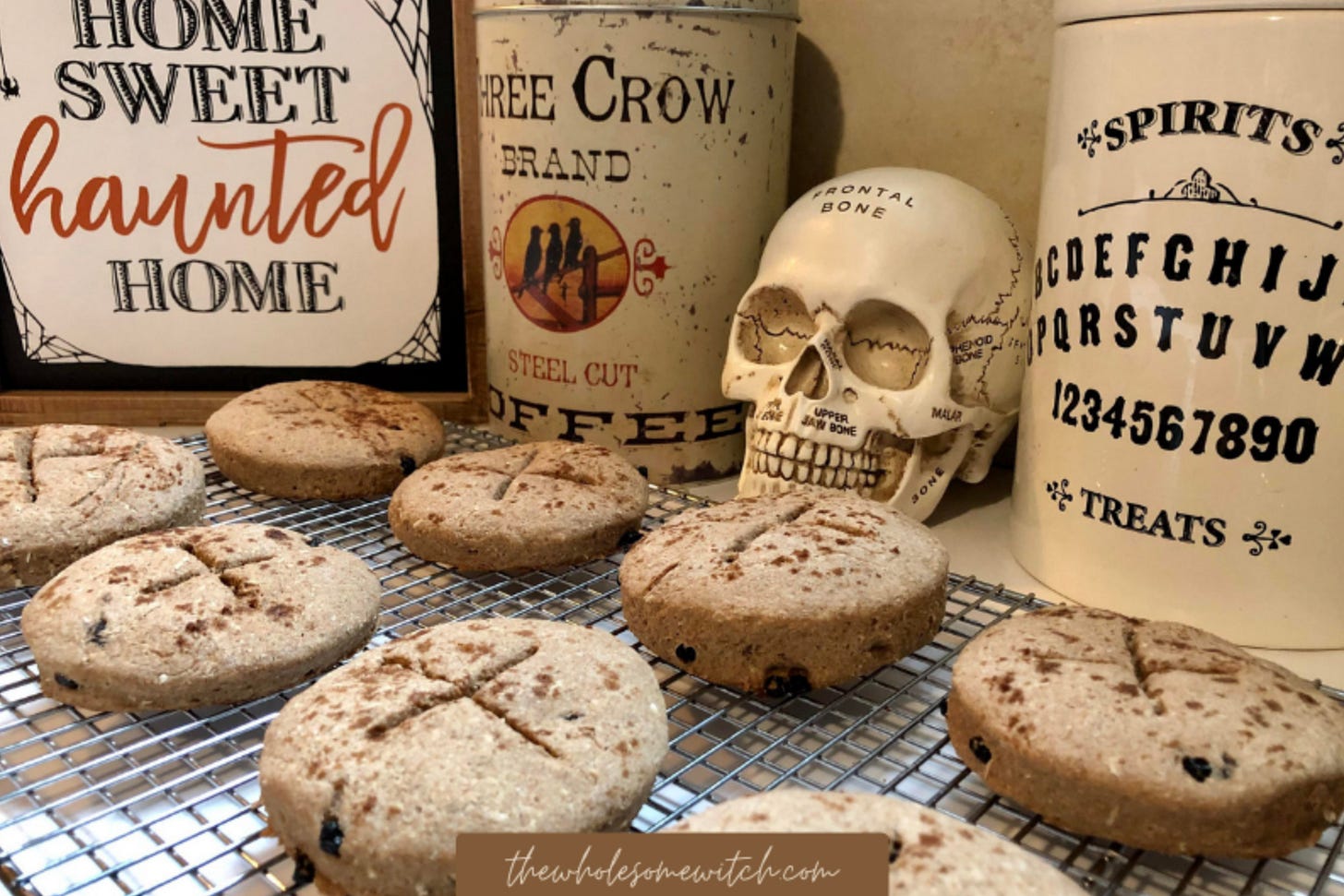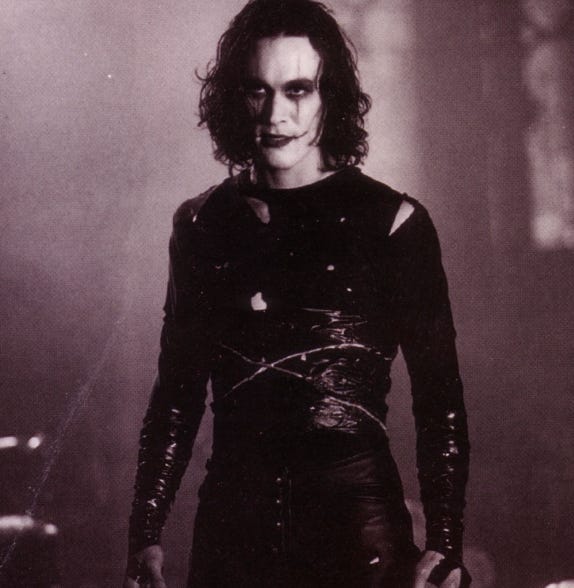Your resident Goth is here to give you the real Halloween backstory...
13 things you might not know about the day of spooks....
Halloween is my crack. I love everything about it - the dressing up, the endless snacks, getting to behave like a child. I adore the spooky season so much in fact that this is an extra festive bonus post, with the 13 weird things you might not know about Halloween. Everyone in your life will be impressed with these creepy facts, I guarantee.
(TW - they start historically and end on the modern-day macabre - ie death and suicide, you’ve been warned…)
It might be all lols and sexy witches now, but Halloween actually has its origins in Celtic pagan tradition and it was often a wee bit gruesome.
The festival of Samhain (pronounced sah-win) was (and still is) celebrated the end of the harvest season, and back then they’d dress up in actual dead animal heads and skins to scare off the evil spirits they thought came to earth before All Saints Day on Nov 1st. On Halloween they believed that the boundary between the worlds of the living and dead were blurred and that ghosties would flock from the netherworld to cause trouble and damage crops - so they took it pretty darn seriously.
Ever wondered where the practice of ‘bobbing for apples’ comes from? By AD 43 the Romans had invaded and conquered Celtic lands and Samhain was combined with two Roman festivals; Feralia, which honoured the dead and another day that celebrated Pomona who was the Roman goddess of fruit and trees. She was represented by - you guessed it - an apple, which might explain why they feature so heavily in Halloween snacks and activities, because IMHO apples are deeply underwhelming as an autumnal fruit choice. Why not a juicy plum? Or a delightful fig I ask thee?
America goes big for Halloween, and sure it’s all capitalist greed now, but they have the Irish to thank for it. Originally Halloween was a tad unpopular in the US, especially in colonial New England and other strict protestant states. Eventually the customs of various European people and American Indians blended to create a new version of Halloween, but it was when millions of Irish fled to the US in the 19th century due to the potato famine, that the tradition was really popularised and it became much more mainstream too.
Halloween has had a long association with spookyness and things like future prediction and fortune telling. Back in the Celtic pagan times they’d build huge sacred bonfires and these were used to gather predictions from Celtic priests about how crops would fare for the year ahead. During the 19th century young women also believed that if they performed tricks with yarn, mirrors and apples on Halloween they could even divine the name of their future husband (might give that a try tbh.) But by the 20th century people were encouraged to leave the associations with the occult, scary and gruesome behind so as not to frighten kids. FFS! Toughen up!
Think ‘trick or treating’ is a cute kids pastime? Think again. It actually originates from the mediaeval Scotland and Irish practice of ‘guising’ where people (including children) would essentially go from door-to-door begging for money and food in exchange for performing tricks or songs. It was sometimes known as ‘souling’ and children were often given ‘soul cakes’ with crosses on the top in exchange for prayers on your behalf.
Our scary pumpkin Jack O’Lanterns were actually based on a sort-of real person. Dating back to ancient Irish legend ‘Stingy Jack’ was a character said to be doomed to roam the earth at night because he’d made a deal with the devil. Jack used coal to light his way and carried it in a carved-out turnip, but when the Irish arrived in the US they upgraded to pumpkins as they were more robust. And Jack has been roaming the earth ever since….muhahahaha
It’s not just Halloween that is a spook fest. Mischief Night (or Goosey Night) was a practice in the 18th century where children would go wild in the streets with eggs, dirt and other gross stuff to reign havoc on their neighbours houses on the day before Halloween. This eventually made its way to the US during the 1930s and cities started to experience a higher number of pranks and vandalism on the 30th October.
It was mostly harmless, but eventually became known as ‘devil's night’ as it started to become more serious. This escalated in Detroit and other Rust Belt cities in the US in the 1970s that were suffering from huge amounts of rising unemployment from the economic downturn. Lots buildings in Detroit were abandoned and arson cases in the days surrounding Halloween rose hugely, until in 1986 when curfews were put in place for anyone under 18 being out past 10pm.
You might have also seen Devil’s Night referenced in the film The Crow too. Spookily, during a gun fight scene actor Brandon Lee was meant to ‘shot’ by a fellow actor, but sadly tragedy struck. Despite being loaded with blanks, there was a fragment of real bullet still lodged in the gun, and it killed Lee. Also breaking the hearts of Goths - like me - worldwide.
“It can’t rain all the time…”Halloween birthday? Old wives tales suggest that those born on 31st October have ‘second sight’, and can communicate with the dead, read dreams and are immune to evil spirits. So jeals! If you’re not lucky enough to be born on Halloween, then hopefully you’ll find a spider instead. Why? Well, if you found one on the day of spook that was seen as a sign of immense good luck in mediaeval Europe. Especially if you found a rare white one (maybe just put flour on a normal one? Joking!)
Bonfires were super common on Halloween from its very earliest Celtic pagan beginnings. Where did they get their name you ask? Well, they were originally called ‘bone fires’ because the Celts threw animal bone on the flames to keep evil spirits away. That’s a great fact, isn’t it - aren’t you glad you kept reading?
This is where it gets a bit morbid - so tune out now if true crime spooks you.
It was 2005 in Delaware, US. People were just passing by halloween decorations in the town of Frederica, admiring one house with particularly realistic decorations. Little did they know, one of the bodies hanging from the house was actually real. It was the body of a woman who had sadly commit suicide the night before - but because of the decorations, nobody realised until later.
In Denver a similar ‘decoration’ in a front garden turned out to be a real body too; the mail deliverer had sidestepped it thinking it was a prop…as he delivered mail to the deceased.Shit gets weird on Halloween. The year was 1957. A couple were about to head to bed, but as they climbed the stairs, the doorbell rang. The husband went downstairs and answered it. He was’t faced with young trick or treaters, but instead an adult in a mask confronted him, and shot and killed him. The trick or treater of doom/murderer turned out to be the girlfriend of his wife, who’d been having an affair with her and wanted him outta the picture.
Meanwhile on October 31, 1981 a couple were brutally murdered in their New York home in Manhattan and their flat was ransacked. Initially the murder was linked to drugs, but a prison informant changed this verdict. Why? Because, one inmate called David Berkowitz - aka notorious serial killer Son Of Sam - had actually ‘predicted’ the murder weeks before it occurred. In that account he gave a very detailed description of what was done to the couple's apartment, and how it looked, but he was in prison so didn’t commit the crime himself. As such, the case has remained unsolved since…
Here’s a softer one to end….in Welsh mythology there’s a legend about a spirit who decides who will die next. (See that’s soft, right?) Angelystor - which means Recording Angel, appears every Halloween at the Llangernyw Yew tree on November 1, in Conwy, North Wales. Is it a reason to visit? You decide.
HAPPY HALLOWEEN BATS!PS- This feature on Them about Halloween being a historical Gay Christmas is excellent - and worth reading. Here’s a quote: “Historian Marc Stein, a professor at San Francisco State University, points to the importance of “carnivalesque” holidays like Halloween for the LGBTQ+ community. These are times when the social order is disrupted, allowing queer people and other marginalized groups to safely express nonconformity in public, without being perceived as a threat to the dominant social order.”












The only thing I liked about spooky season was dressing up in uni for the best party season of the year but I loved reading all these! Thanks for sharing. Also, the line about apples being underwhelming made me laugh. I do like apples but agree re plums and figs. 🤣🤔